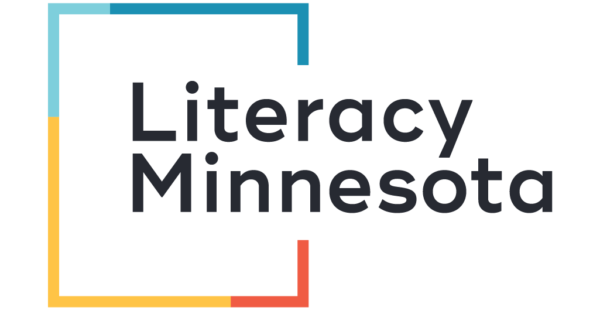- MN ABE Connect
- Archive
- Changes Are Coming to the USCIS Test for Naturalization (“The Citizenship Test”)
 October 23, 2023
October 23, 2023
Changes Are Coming to the USCIS Test for Naturalization (“The Citizenship Test”)
Mya J. Shaftel, ESL and Citizenship TeacherUSCIS (US Citizenship and Immigration Services) is proposing two significant changes to the Citizenship Test.
1) Change the Civics & History portion (the 100 Questions) from an oral Q & A to multiple-choice format on a tablet or computer.
2) Add a speaking component to assess English proficiency.
Why the proposed changes?
USCIS is conducting a nationwide trial of planned changes to the citizenship test, with particular emphasis on the civics and English language tests, and advances in technology for administering the test. USCIS is currently piloting the new changes with approximately 170 organizations who are located in 37 states and territories and range in size from serving a few students to hundreds.
Technical Advisory Group (TAG)
USCIS has created an advisory group of external subject matter experts, including from Adult ESL, Second Language Acquisition, Assessment Design, and American history. The advisory group will provide recommendations on content, language level, scoring rubrics, as well as provide educational resources accessible to the public.
How will these changes affect Citizenship classes?
1) Multiple-Choice format
The first change would alter the test from a knowledge test (“Do you know the U.S. facts/history?”) to a knowledge test plus a reading test, and the reading test would be performed on a tablet or computer in multiple-choice format. For many people taking citizenship classes, understanding the questions alone is sometimes challenging enough. Adding a reading component to the test in a multiple-choice format would mean that citizenship classes would need to focus more heavily on test-taking and reading strategies.
Consider this example:
Current format: Applicants study a list of 100 US Civics and History questions. At the interview they are asked a randomized set of up to 10 questions and need to answer 6 correctly to pass. While many questions have multiple answers, applicants need only learn, understand and remember one correct answer.
- Example: What is one right or freedom from the First Amendment?
-
- speech
- religion
- assembly
- press
- petition the government
In this example, students can choose “speech” as their one answer, and move on to the next question.
 Proposed multiple-choice format: Applicants still study a list of 100 questions and need 6/10 correct to pass. However, rather than learning and practicing one, and sometimes two choices, applicants will need to understand and remember all the possible choices that could be in an answer. About 33% of the questions have 3 or more choices.
Proposed multiple-choice format: Applicants still study a list of 100 questions and need 6/10 correct to pass. However, rather than learning and practicing one, and sometimes two choices, applicants will need to understand and remember all the possible choices that could be in an answer. About 33% of the questions have 3 or more choices.
- Example: What are two ways that Americans can participate in their democracy?
-
- vote
- join a political party
- help with a campaign
- join a civic group
- join a community group
- give an elected official your opinion on an issue
- call Senators and Representatives
- publicly support or oppose an issue or policy
- run for office
- write to a newspaper
In this example, applicants will need to learn and practice all 10 of those choices above because any of them could appear on a multiple-choice test.
This will increase the need to understand how to take multiple-choice tests. Classes will need to introduce test-taking strategies as part of instruction, for example, practice predicting answers before looking at choices and eliminating obvious incorrect answers/distractors, and practice taking multiple-choice tests in classes.
2) Additional Speaking Component
The second proposed change is an additional speaking component. Currently, applicants have their English assessed in the interview based on questions from their application. In this part of the interview, the USCIS officer makes small talk and asks information applicants are likely to know. For example, their background information, demographics, work history, family, where they have lived, etc.
In the proposed new format, applicants would be asked to describe a picture, requiring a higher level of English vocabulary, grammar, and perhaps content knowledge than they are currently required to demonstrate.
Both changes increase the level of difficulty of the test. The changes would likely create new barriers for many who apply for Citizenship. It will require much more time on the part of many to develop greater English reading and speaking skills.
How can I get more information?
There are groups and blogs out there tracking changes and the testing pilot. Here is one I’ve been following:
You can also hear a Q &A on this topic from MPR’s Minnesota Today show, which aired on 8/14/23:

Newsletter Signup
Get MN ABE Connect—the official source for ABE events, activities, and resources!
Sign UpArticle Categories
- ABE Foundations/Staff Onboarding
- ACES/Transitions
- Adult Career Pathways
- Assessment
- CCR Standards
- Citizenship
- COVID-19
- Cultural Competency
- Digital Literacy/Northstar
- Disabilities
- Distance Learning/Education
- ELA
- Equity/Inclusion
- ESL
- HSE/Adult Diploma
- Listening
- Math/Numeracy
- Mental Health
- Minnesota ABE
- One-Room Schoolhouse/Multilevel
- Professional Development
- Program Management
- Reading
- Remote Instruction
- Science
- Social Studies
- Speaking/Conversation
- Support Services
- Teaching Strategies
- Technology
- Uncategorized
- Volunteers/Tutors
- Writing